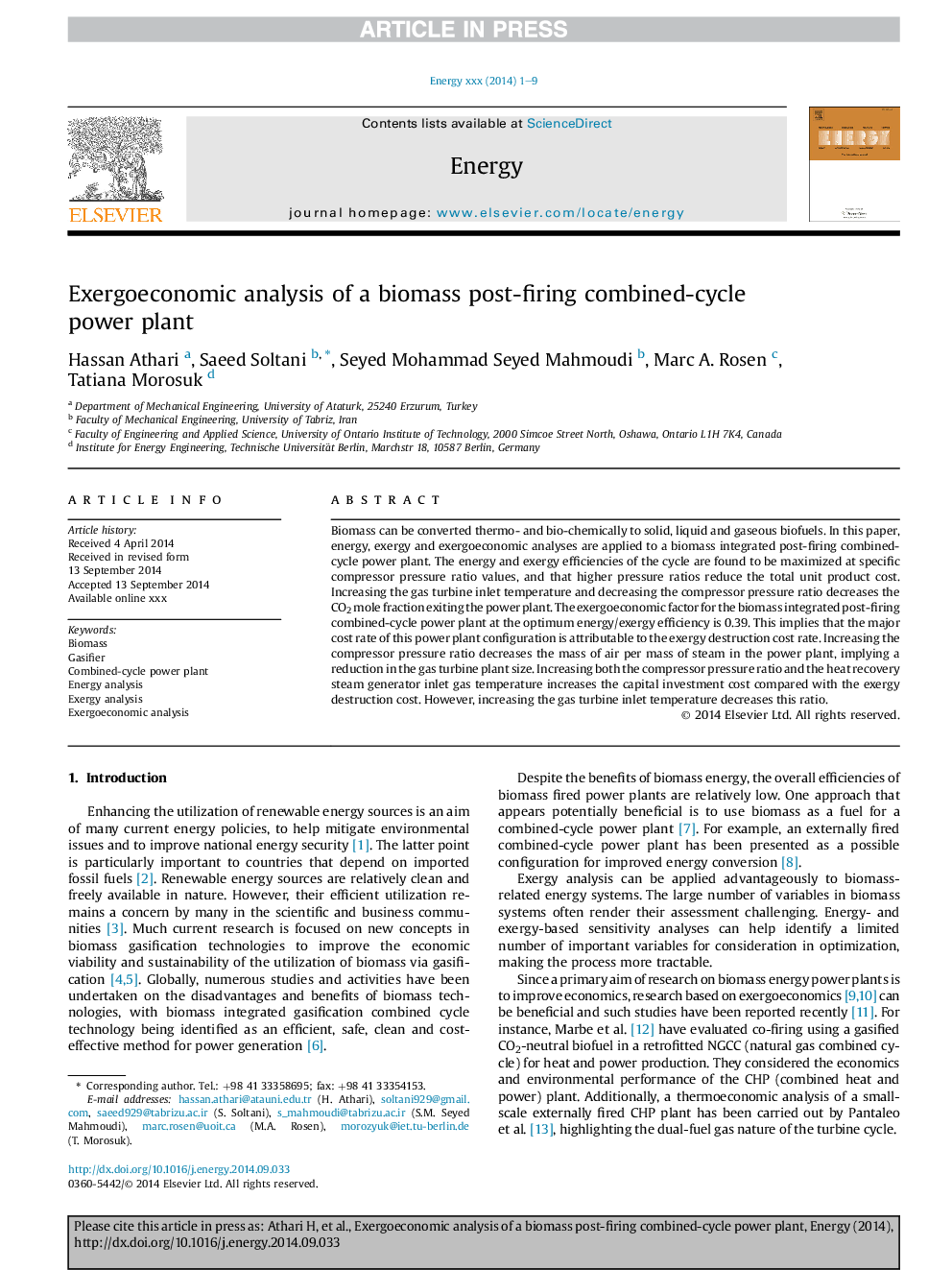| Article ID | Journal | Published Year | Pages | File Type |
|---|---|---|---|---|
| 8076481 | Energy | 2014 | 9 Pages |
Abstract
Biomass can be converted thermo- and bio-chemically to solid, liquid and gaseous biofuels. In this paper, energy, exergy and exergoeconomic analyses are applied to a biomass integrated post-firing combined-cycle power plant. The energy and exergy efficiencies of the cycle are found to be maximized at specific compressor pressure ratio values, and that higher pressure ratios reduce the total unit product cost. Increasing the gas turbine inlet temperature and decreasing the compressor pressure ratio decreases the CO2 mole fraction exiting the power plant. The exergoeconomic factor for the biomass integrated post-firing combined-cycle power plant at the optimum energy/exergy efficiency is 0.39. This implies that the major cost rate of this power plant configuration is attributable to the exergy destruction cost rate. Increasing the compressor pressure ratio decreases the mass of air per mass of steam in the power plant, implying a reduction in the gas turbine plant size. Increasing both the compressor pressure ratio and the heat recovery steam generator inlet gas temperature increases the capital investment cost compared with the exergy destruction cost. However, increasing the gas turbine inlet temperature decreases this ratio.
Keywords
Related Topics
Physical Sciences and Engineering
Energy
Energy (General)
Authors
Hassan Athari, Saeed Soltani, Seyed Mohammad Seyed Mahmoudi, Marc A. Rosen, Tatiana Morosuk,
